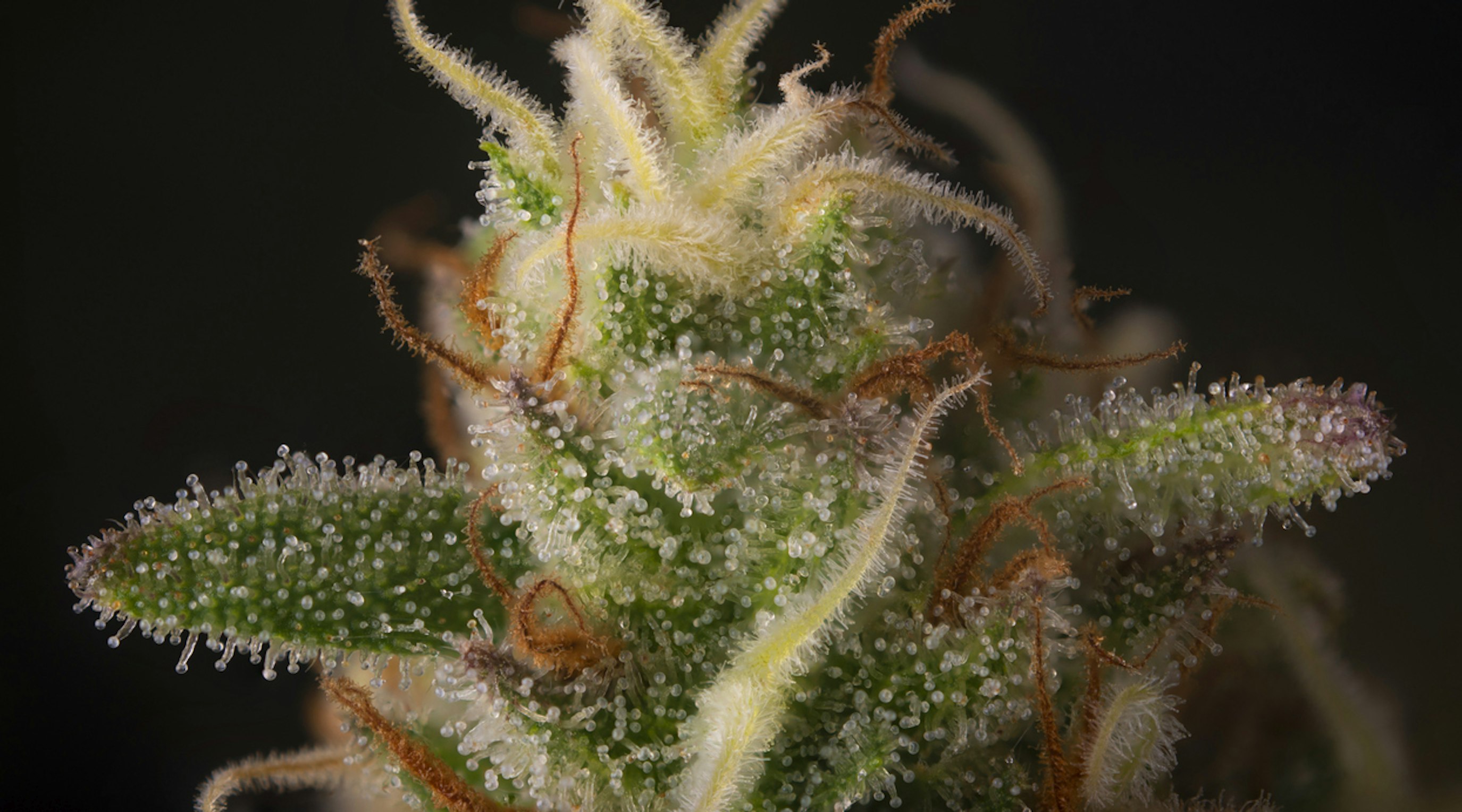Cannabis terpenes ‘as effective as morphine’ for chronic neuropathic pain suggests new research
7 min read
Sarah Sinclair
New research has shed more light on the importance of terpenes in medical cannabis treatment, particularly for patients experiencing neuropathic pain.
Contents
A study by researchers at the Comprehensive Center for Pain & Addiction at the University of Arizona Health Sciences recently found that cannabis terpenes were ‘as effective as morphine’ at reducing chronic neuropathic pain.
The results, published in the scientific journal PAIN at the end of May, help to advance our understanding of the therapeutic effects of terpenes and the important role that they play in medical cannabis treatment.
We take a closer look at what the research found and what conclusions we can draw from it.
Cannabis terpenes and pain: the basics
What are terpenes?
Terpenes are naturally occurring chemical compounds found in plants which are responsible for how they smell.
Most plants have two dominant terpene species. However, Cannabis Sativa L. is unusual in that it contains up to 150 terpenes with multiple terpenes acting as the dominant species. You can read more about the different terpenes and their effects in our educational series.
Terpenes and the ‘entourage effect’
Terpenes work synergistically with cannabinoids and other compounds in the plant to enhance the therapeutic effects, potentially leading to more effective treatment outcomes.
This is known as the ‘entourage effect’, which argues that the effects of all of the compounds in the plant working together is greater than any one individually.
Terpenes for pain relief
In previous research, terpenes have demonstrated a wide range of therapeutic benefits, including anti-inflammatory and pain-relieving effects.
In 2021, a study from the University of Arizona Health Sciences identified terpenes including humulene, geraniol, linalool and beta-pinene, as promising new targets for pain therapies.
The researchers found that the terpenes, when used by themselves, mimic the effects of cannabinoids, including a reduction in pain sensation.
When combined with cannabinoids, the pain-relieving effects were amplified without an increase in negative side effects, further substantiating the importance of the entourage effect.
Medical cannabis and neuropathic pain
One in 11 people in the UK suffer from chronic neuropathic pain – including conditions such as nerve damage, sciatica or severe numbing in hands and feet – that substantially impacts on their quality of life.
Chronic pain is the most common indication for which medical cannabis is prescribed in the UK and many patients who experience neuropathic pain have reported its benefits.
This is supported by a number of clinical trials that have demonstrated cannabis-based medicine as holding potential for alleviating pain, particularly neuropathic pain.
Terpenes and neuropathic pain: new research
The new study was led by John Streicher, PhD, a member of the Comprehensive Center for Pain & Addiction and a professor of pharmacology at the College of Medicine – Tucson.
Streicher and his team looked specifically at five terpenes that are found in moderate to high levels in Cannabis: alpha-humulene, beta-caryophyllene, beta-pinene, geraniol and linalool.
The terpenes were tested individually and then compared with morphine in a mouse model of chemotherapy-induced neuropathic pain (CIPN).
CIPN is a type of chronic pain that occurs when chemotherapy medications cause damage to the nerves, which can be debilitating and hard to treat.
What did the study find?
The research team found that each terpene was successful in reducing the sensation of pain at levels near to, or above, the peak effect of morphine.
When the terpenes were combined with morphine, the pain-relieving effects of all five terpene/morphine combinations were significantly increased.
None of the terpenes had reward liability, making them a low risk for addiction. In addition, some of the terpenes did not cause aversive behaviours, which suggests they could be effective therapeutics without producing distressing side effects.
Modes of administration
The researchers also tested different routes of terpene administration, including via injection, oral dosing and inhalation of vaporised pure terpenes.
Interestingly, given that these are the most common modes of administration, they found that when terpenes were given orally or inhaled, the effects were significantly reduced or absent.
Current treatments for neuropathic pain: challenges and alternatives
According to the research team, the findings —which are the first to examine the side-effects of terpenes— identify these compounds as potential therapeutics for chronic neuropathic pain, without the negative effects of current treatments.
Opioid medications are often used to treat many types of pain, but they can come with a host of unwanted side effects.
Opioids activate the brain’s reward system, which can lead to addiction and can result in a patient building up a tolerance. This occurs when the body gets used to a medication and needs increasingly larger doses to have the same effect.
A paper published by researchers in the UK in 2021 compared the effects of commonly prescribed medications and medical cannabis in patients with chronic neuropathic pain.
Medical cannabis was found to contribute more to patients’ quality of life and was more favourable in terms of side-effects such as cognitive impairment, dizziness, constipation, affect disorders, overdose toxicity, respiratory depression, withdrawal, and dependency.
FAQs
How long does cannabis take to work for pain?
That depends on a huge range of factors, including:
- The type of medical cannabis you are prescribed (flower, oil, edibles, topicals, etc.)
- The cannabinoid and terpene profile of the product you have been prescribed
- The method of administration
- Your body's unique chemistry and metabolism
- The severity and type of pain you are experiencing
- The dosage prescribed by your healthcare provider
Check out the link if you want to learn more about medical cannabis for pain relief.
Which terpenes are the best for pain?
While more research is needed to confirm the findings of individual studies, some of the most promising terpenes for pain relief include alpha-humulene, beta-caryophyllene, beta-pinene, geraniol, and linalool.
What medical cannabis option is good for pain and sleep?
Everyone reacts to medical cannabis differently, so there is no one-size-fits-all answer to this question. That said, THC-dominant options are often prescribed for pain and sleep issues, and CBN is showing promise in promoting sleep and pain relief.
Your Releaf prescribing specialist will work with you to find the best medical cannabis option for your specific needs and symptoms.
Takeaways and implications for medical cannabis treatment
This latest study not only further supports the use of medical cannabis in the treatment of neuropathic pain but goes a step further to advance understanding of the role that terpenes play in these effects.
While more definitive research is required to better understand the safety and efficacy of terpenes as potential pain therapies, as well as what role they could play in combination with or as an alternative to current medications, the findings are valuable for patients living with this condition.
Treatment with medical cannabis is extremely individual, but patients and their clinicians may find it helpful to consider these findings—and terpene content in general—when discussing the best medication for their needs.
Always consult with your doctor before making any changes to your treatment regime.
Share article
Did you like this article?
It is important to seek medical advice before starting any new treatments. The patient advisors at Releaf are available to provide expert advice and support. Alternatively, click here to book a consultation with one of our specialist doctors.
Elevate your wellness with medical cannabis
Get comprehensive care, convenience, and confidence with an all-in-one treatment plan.
Am I eligible?Authors
Sarah, a distinguished journalist with over a decade in publishing and communications, now excels in cannabis health and policy journalism in the UK, advocating for informed health decisions through her award-winning work.
meet our specialist
Editorial Policy
All of our articles are written by medical cannabis experts, guided by strict sourcing guidelines, and reference peer-reviewed studies and credible academic research. Our expert clinical team and compliance specialists provide valuable insights to ensure accuracy when required. Learn more in our editorial policy.
Need more help?











